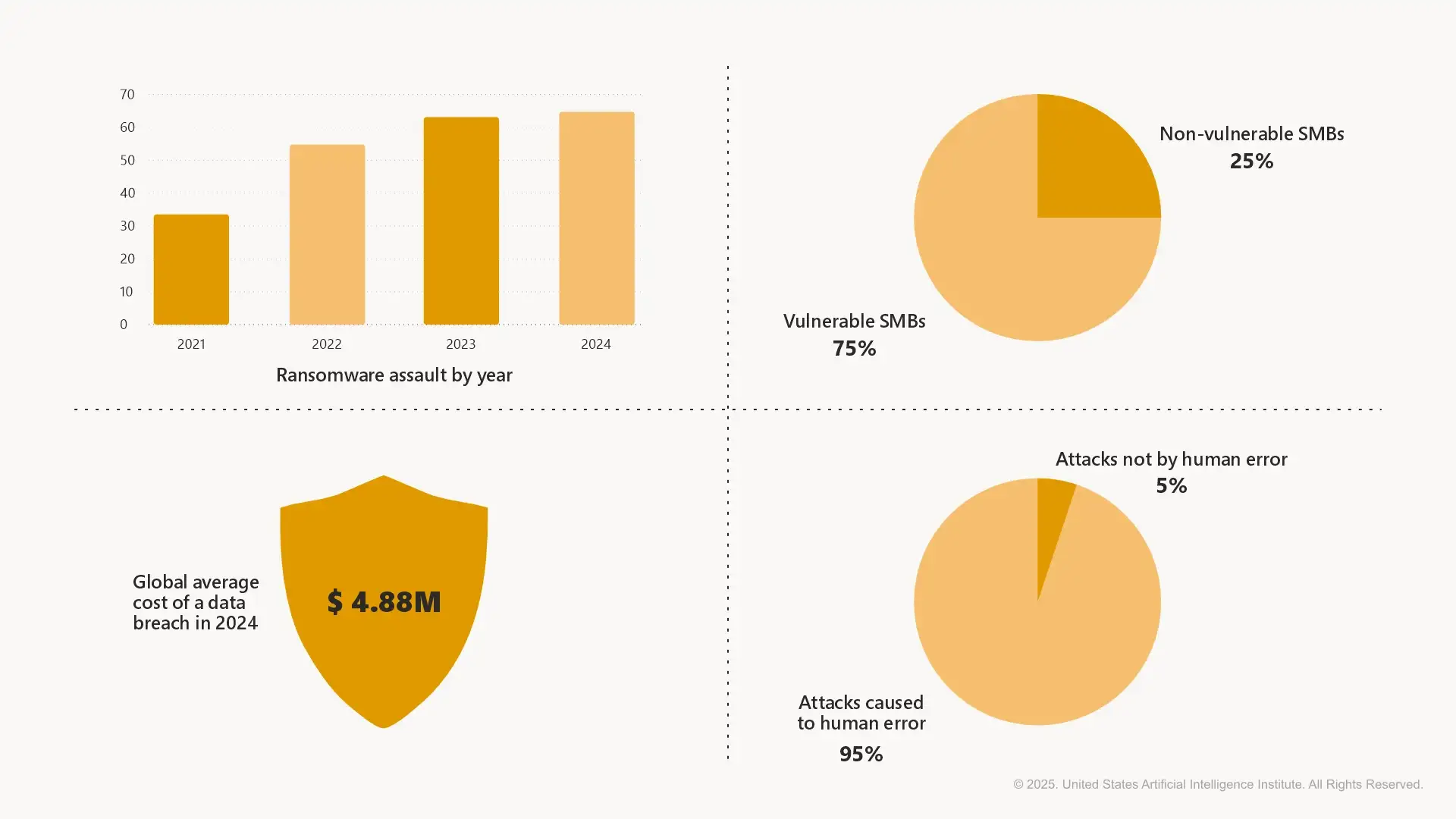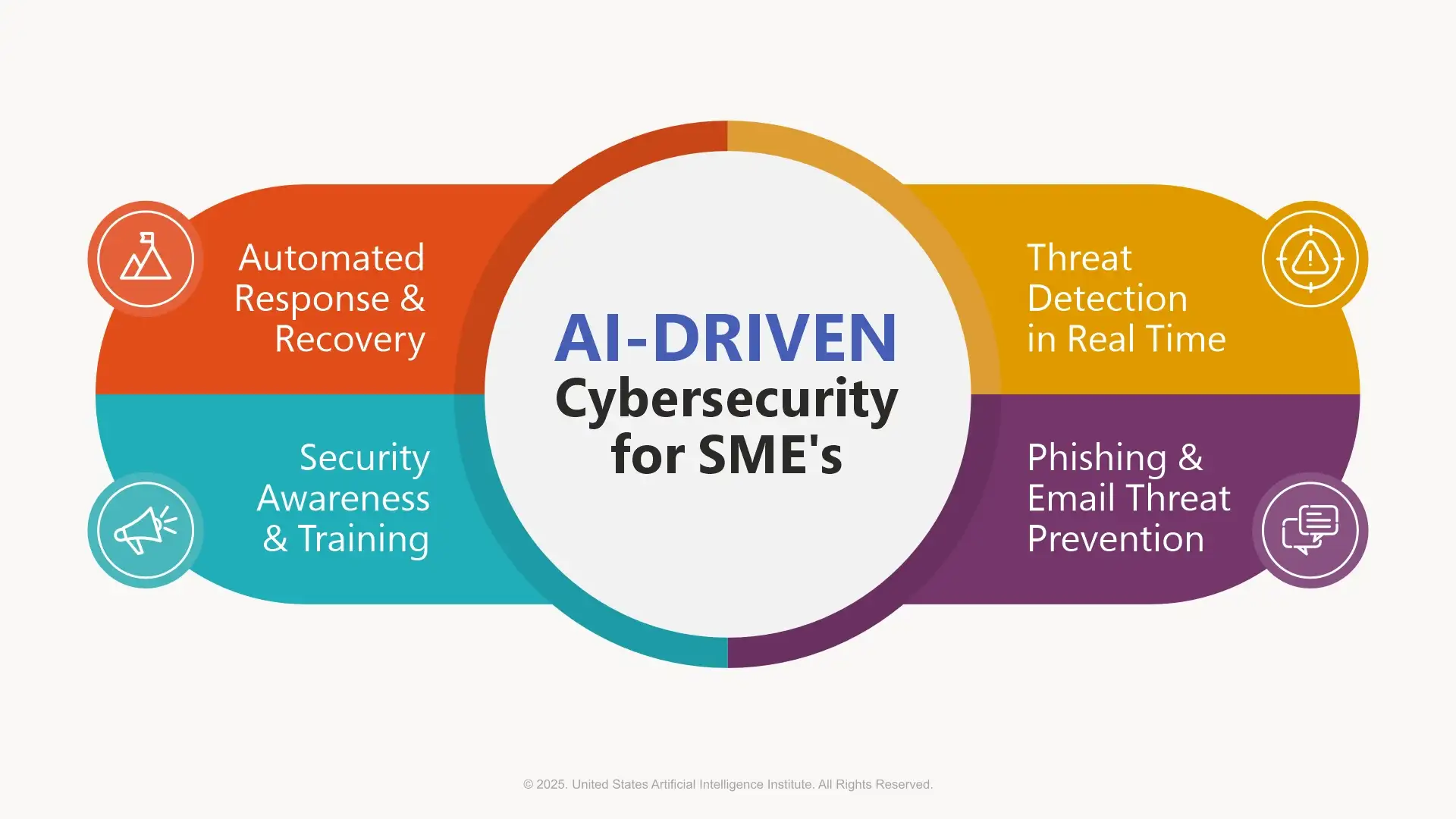
In a world where ransomware, phishing, and data breaches have become part of our daily headlines, it's not just multinational corporations that are at risk. Small and Medium Enterprises (SMEs), which form the bedrock of most economies, are increasingly becoming prime targets for cybercriminals. The irony? Many of these businesses still think they’re too small to be attacked.
But here's the reality: attackers know SMEs are often under-protected. And that’s where artificial intelligence (AI) enters the picture, not just as a buzzword, but as a real, practical defense mechanism.
Why Cybersecurity for SMEs Matters Now More Than Ever
Let’s set the stage. Approximately 65% of financial institutions globally reported a ransomware assault in 2024, up from 64% in 2023 and 34% in 2021, according to Statista, Furthermore, studies on Accenture’s Cybercrime Study, and ScienceDirect, establish that the threat of cybercrime does not go away for SMEs.
Indeed, it has been noted that about 43% of SMEs have been the victims of cyberattacks. Studies show that 75% of SMEs would find it difficult to stay in business if they were the subject of ransomware attacks, and 95% of these attacks can be attributed to human error according to the World Economic Forum. The cost of a data breach for an SME can run into hundreds of thousands of dollars, enough to shutter many for good (IBM Cost of a Data Breach Report 2023).
We often talk about AI transforming industries like finance, healthcare, or education. But cybersecurity? That’s where AI has perhaps the most urgent and immediate role to play. Especially for SMEs that can’t afford to hire a battalion of security analysts or invest in expensive enterprise-grade tools.

The Promise of AI in Cybersecurity for SMEs
AI levels the playing field. It democratizes cybersecurity by making intelligent defense accessible to businesses of all sizes. Here’s how:

1. Threat Detection in Real Time
AI systems can analyze network behavior and flag anomalies faster than any human could. For example, platforms like CrowdStrike use AI to identify and stop threats within milliseconds. SMEs benefit because these systems are designed to work autonomously, without needing an in-house cybersecurity team.
2. Phishing & Email Threat Prevention
AI can scan incoming emails, detect suspicious content or links, and quarantine them before anyone clicks. This is vital because over 90% of attacks begin with a phishing email (Verizon Data Breach Investigations Report). Tools like Mimecast and Barracuda have made this technology accessible to smaller firms.
3. Automated Response and Recovery
When an incident occurs, AI-powered systems can isolate affected machines, shut down processes, and initiate alerts automatically. This swift response limits damage and downtime, which is critical for SMEs with limited resources.
4. Security Awareness & Training
Some AI tools adapt employee training based on behavioral analytics. For instance, if an employee frequently clicks suspicious links, the system can push additional training content. Companies like KnowBe4 are leading the way in this intelligent, personalized security training.
Real-World Use Cases: The Impact is Tangible
Take the case of a mid-sized accounting firm in Chicago that adopted an AI-driven endpoint protection platform. Within weeks, it had flagged a compromised user credential being used in a brute-force attack. The firm avoided a major breach and reported zero downtime.
In Nigeria, a fast-growing logistics startup used an AI-powered firewall and anomaly detection system to block hundreds of intrusion attempts monthly, many of which were previously slipping through legacy tools.
These aren’t edge cases. They are snapshots of a broader shift where SMEs are starting to see AI not as a luxury, but as a necessity.
Breaking the "Too Expensive" Myth
One of the biggest misconceptions about AI-driven security is that it’s out of reach for smaller organizations. But the rise of SaaS-based security platforms, many with tiered pricing, has changed the game. Providers now offer scalable solutions that grow with your business.
Even open-source tools enhanced with basic AI modules can provide robust first-layer defense. It’s no longer about spending millions; it’s about making smart choices.
Challenges and Considerations
Of course, no technology is a silver bullet. SMEs adopting AI for cybersecurity need to:
Looking Ahead: SMEs and the National Cybersecurity Landscape
SMEs account for over 90% of businesses in many economies, including the U.S. Their cybersecurity isn’t just a business concern—it’s a national one. The US Cybersecurity and Infrastructure Security Agency recognizes this and calls for more support for small businesses.
AI is central to that strategy. By embedding intelligent tools into the cybersecurity fabric of SMEs, we create a more resilient, secure digital economy. One where every business, big or small, can stand its ground.
Conclusion
We’re entering an era where cybersecurity can’t be an afterthought especially for SMEs. The threats are evolving too fast. But so are the tools.
AI offers SMEs the chance to leapfrog traditional defenses and build proactive, intelligent security systems that don’t just react but anticipate.
As a Product Strategic and AI Transformation Leader, I believe the conversation must now shift from "why AI?" to "how fast can we adopt it?" Because defending the digital backbone of our economies isn’t optional. It’s mission-critical.
And AI is our strongest ally in that mission.
Follow us: